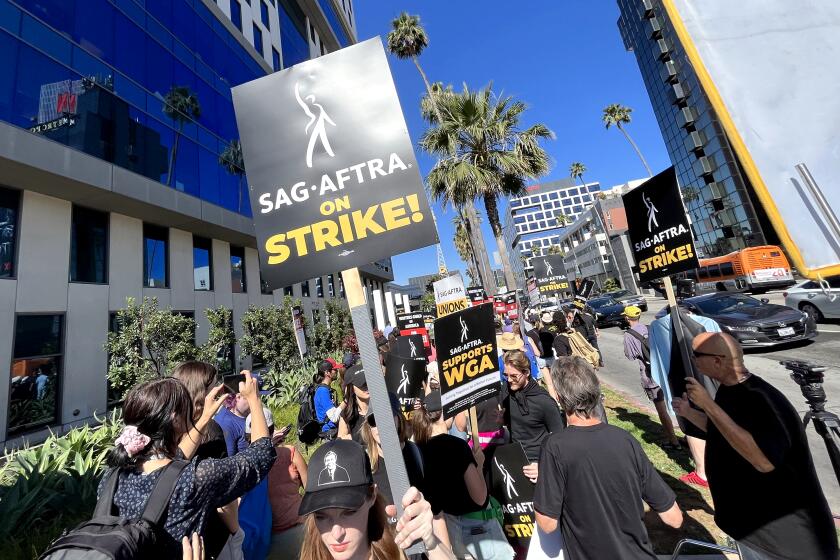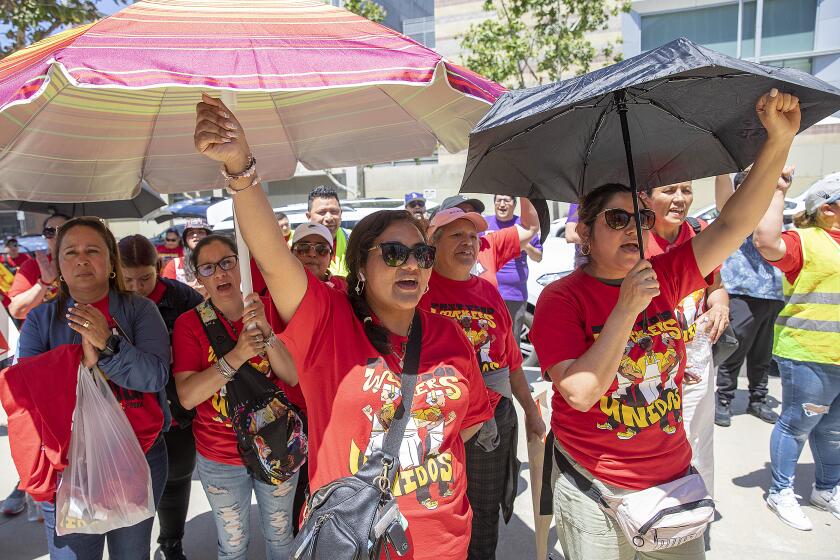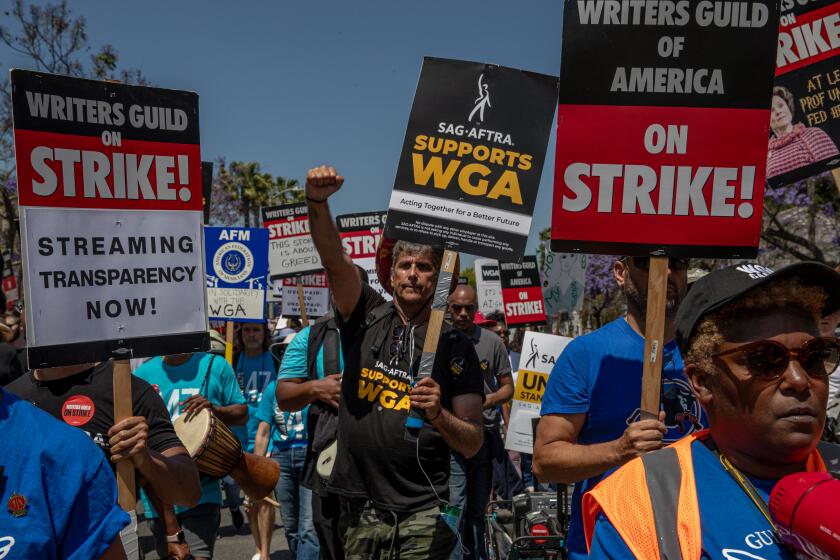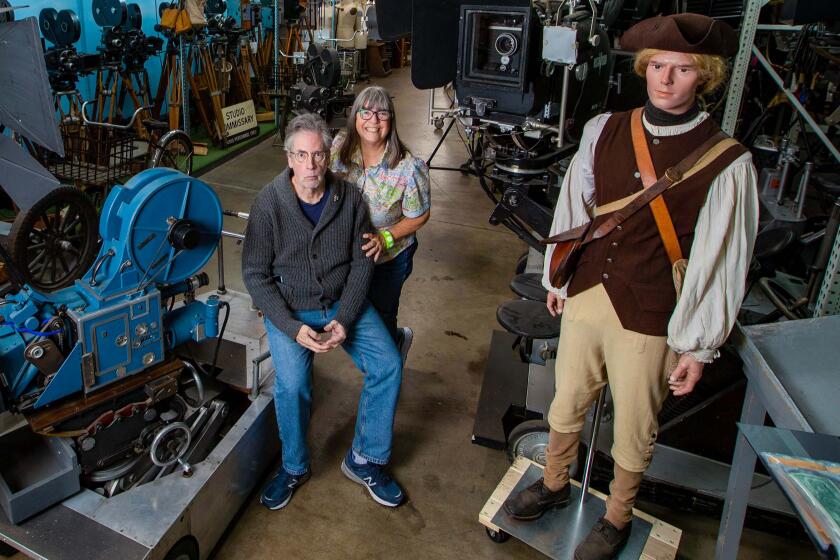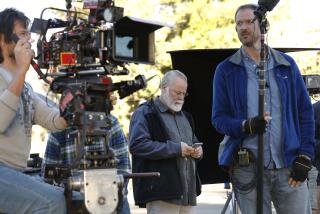What to know about an actors’ strike: Five questions answered
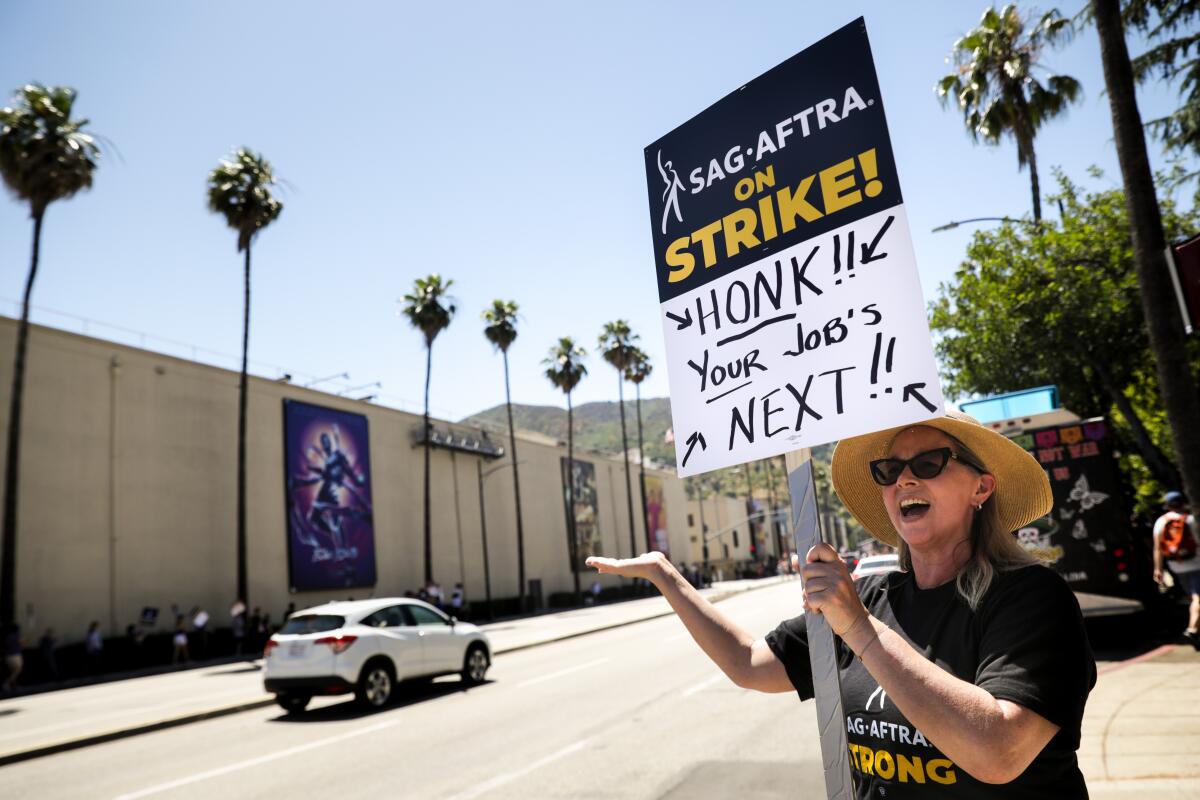
- Share via
The national board of SAG-AFTRA on Thursday authorized the union’s members to go on strike after efforts to negotiate a new contract with the major studios collapsed.
The decision led thousands of SAG-AFTRA members to join WGA members on picket lines beginning Friday. The historic action marks the first time since 1960 that both unions have staged walkouts simultaneously. The last actors’ strike against the studios was in 1980.
The walkout will halt productions worldwide and cause more economic pain and disruption for the film and TV industry already shaken by the writers’ strike that began May 2.
How did talks between actors and studios collapse, resulting in the first strike under the film and TV contract since 1980?
How did we get here?
The Alliance of Motion Picture and Television Producers entered into negotiations with the actors union on June 7, just three weeks before their contract was due to expire.
Things got off to a contentious start when union leaders asked for and received — by a huge margin — a strike authorization from members even before bargaining began.
On the eve of the contract deadline, the two sides agreed to extend talks for two more weeks until July 12. At first, it appeared that the union was nearing a deal after union leaders said that negotiations were “extremely productive” and that they were optimistic about reaching a deal.
But behind the scenes the sides remained far apart on many key issues.
Arguing that many actors had been shortchanged by the streaming revolution, the union proposed that a third-party company measure the success of shows and that residual payments be tied to how they perform. AMPTP companies balked at that idea, arguing that many streaming platforms are not yet profitable.
The parties also clashed over proposals to curb the use of self-taped auditions, boost contributions to the union’s health and pension plan and increase basic pay to offset inflation. The union at one point was seeking a 15% increase in wages (eventually lowered to 11%) in the first year of the three-year contract, far above what Directors Guild of America members secured in their recent contract negotiations.
Despite a federal mediator being brought in on the last day of negotiations, no deal was reached. Simply put, there were too many points of disagreement and not enough time to tackle each issue, insiders told The Times. Read more in this post-mortem of what went wrong.
SAG-AFTRA has approved a deal from the studios to end its historic strike. The actors were on strike for more than 100 days.
Was AI a big stumbling block?
While much of the attention focused on streaming residuals, artificial intelligence emerged as a major issue in negotiations. The spread of the technology stirred deep anxieties among performers about how their image and likeness could be used — and abused. So the actors union wanted to establish clear regulations around AI, as did the WGA.
Actors argue that it is already typical to sign away rights to their voices and likenesses as popular characters for use by studios — without compensation — in amusement parks or video games. They feared something similar would happen with the manipulation of their voices and likenesses by AI programs.
AMPTP offered what it called a groundbreaking proposal that it said “protects performers’ digital likenesses.”
But SAG-AFTRA negotiators contended that companies could scan the initial performance of a background actor and then reuse the image without their consent indefinitely. AMPTP members said that claim was inaccurate.
Sweating workers across multiple industries in the Los Angeles area hit the (hot) pavement in continuing protest actions.
So who is on strike?
The work stoppage applies to any of SAG-AFTRA’s 160,000 members who work under the union’s film and TV contract with companies that belong to the AMPTP, a group that represents all the major producers in Hollywood, including Netflix, Walt Disney Co., Warner Bros. Discovery, Netflix and Amazon Studios.
The strike also affects actors who work on overseas productions, not just those in the U.S. Additionally, SAG-AFTRA members must stop performing all acting duties, including promoting or marketing movies and TV shows.
But because of the peculiarities of union contracts, not all actors are going on strike. The work stoppage does not apply to performers who work under other contracts, such as those who do commercials or work on soap operas and talk shows.
Also unaffected: broadcasters and actors on some very low-budget independent productions and student films, the union told members on its website.
Those who work on independent productions not tied to AMPTP members also may be exempt if the companies follow the union’s terms. Dubbing work probably also would be exempt, SAG-AFTRA has said.
Inside the business of entertainment
The Wide Shot brings you news, analysis and insights on everything from streaming wars to production — and what it all means for the future.
You may occasionally receive promotional content from the Los Angeles Times.
What effect will the strike have?
This is unknown territory, as it has been 63 years since Hollywood last weathered simultaneous strikes by actors and writers, and that was at a time when the industry was much smaller than it is today.
An actors’ strike, coming on the heels of the writers’ strike, is a double whammy for an industry that was already struggling to emerge from the pandemic and upheaval caused by the streaming era. In Los Angeles, on-location scripted production had already ground to a halt in recent weeks, according to FilmLA.
A walkout by actors will shut down all scripted film and TV production, not just current projects but TV series that were scheduled to resume filming in the fall and big movies that now will be postponed into the distant future. Projects affected include movies such as “Gladiator 2” and “Deadpool 3” and Ryan Murphy’s “American Horror Story” anthology series.
New seasons of some shows including “Abbott Elementary” and “Stranger Things,” which had been due to start production this summer, were previously put on hold because of the writers’ strike.
And projects filming outside of the U.S. won’t be immune. Under SAG-AFTRA’s “Global One Rule,” actors are required in most cases to work under the union’s agreements wherever they are in the world.
Hollywood is once again in the midst of a historic labor battle in which studios are facing a possible strike on two fronts in a protracted fight over new forms of distribution.
Will the local economy take a big hit?
Yes. Even before the actors’ strike, economists and industry watchers predicted the fallout would be a lot more than that of the last major walkout in 2007-08.
That strike lasted 100 days and cost L.A. an estimated $2.1 billion. This time, the toll could be even greater.
Todd Holmes, an associate professor of entertainment media management at Cal State Northridge, estimates that if the WGA strike exceeds three months, as many predict, it could cost the L.A. region at least $3 billion.
Already, businesses linked to the film and TV industry are feeling the pain, with local prop houses and other suppliers laying off workers in response to a slowdown in demand. Thousands of crew members who work behind the scenes on film and TV sets will be out of work, along with writers and actors.
As productions shut down due to the writers’ strike, local prop houses, florists and caterers worry about their future and loss of work, as their business costs continue to rise.
More to Read
Inside the business of entertainment
The Wide Shot brings you news, analysis and insights on everything from streaming wars to production — and what it all means for the future.
You may occasionally receive promotional content from the Los Angeles Times.
